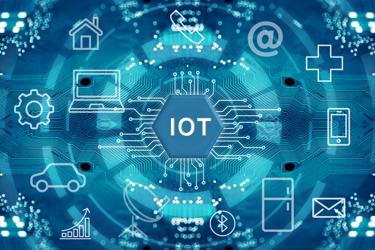How Low-Power Technology And Energy Harvesting Can Achieve A Battery-Free IoT
By David Su, Atmosic Technologies

As connected devices continue to grow in popularity, they are streamlining operations for virtually every industry, including manufacturing, agriculture, medicine, retail, and more. For consumers, IoT devices such as smart speakers and wearables are providing new experiences previously unheard of.
It’s great to see the progress that the IoT has brought to different industries, but with these advances also comes the concern of how to deal with the challenges of batteries used to power the billions of connected devices. Batteries are costly to maintain and do long-term harm to our environment when they are discarded. To resolve these issues, the tech industry is starting to embrace energy harvesting solutions that can enable forever battery life.
The first step to enabling energy harvesting is to create an ultra-low power connectivity solution. When the connectivity solution doesn’t consume a lot of energy, or if you don’t need a large amount of power to transmit wireless signals, then even modest amounts of harvested energy can be sufficient to power an IoT device. With extremely low power implementations, devices can more efficiently connect, helping to extend battery life. Imagine lowering the power consumption of the connectivity solution by 5 to 10 times. Choosing Bluetooth 5.0 as the connectivity technology for IoT devices enables connectivity to a large installed base, operates on lower power than prior specifications, and offers range that’s near to that of Wi-Fi. When energy harvesting is combined with other technologies like low-power radio operation and on-demand wake-up technologies, devices can benefit from forever battery life. “Forever Battery” is achieved when the battery of a connected device can last without replacement until the device itself fails or is made obsolete by emerging technologies.
By combining wireless technology and energy harvesting solutions, true wireless – as in no power cord needed – is a possibility for edge IoT devices. If a device can operate on harvested energy alone, the need for charging or a permanent power cord is eliminated. One could argue that disposable batteries have already offered this solution, but it’s clear that the trajectory on which our global battery consumption is heading is not sustainable. To combat the costs and environmental waste associated with batteries, connected devices with ultra-low power consumption are a must.
There are several popular methods of energy harvesting, including photovoltaic/solar, radio frequency (RF), mechanical (motion), and thermal.
Photovoltaic
Photovoltaic power, sourced from either the sun or light, can be captured by a photovoltaic (PV) cell. Think of it as a tiny solar panel or screen integrated into the product design and used to capture light energy. Today’s advanced solar cells have improved durability and efficiency and can produce larger output energy for given light intensity.
Radio Frequency (RF)
Controlled RF energy harvesting is especially useful in powering electronics wirelessly in scenarios in which it is hard or impractical to replace batteries in a deployed wireless network. The RF energy beamed from ambient RF transmitters can be picked up by a receiver at a faraway distance and, if this detected energy is large enough, it can be used to power up the receiver electronics.
Mechanical
There are two types of motion-based energy harvesters: (1) the more traditional ones using a coil and magnet and (2) the ones based on the piezoelectric effect. The coil and magnet-based harvesters can generate electric energy through physical movement when a switch is flipped or when a doorknob is turned. Piezoelectric energy harvesters generate electrical energy from mechanical strains, either in the form of continuous mechanical motion/vibration or from intermittent strains such as the clicking of a button.
Thermal
A thermoelectric generator (TEG) is a solid-state device that generates electricity by exploiting the temperature gradient in the environment. The amount of generated power depends on the temperature as well as the amount of heat flux that can be successfully moved through the TEG device.
The combination of low power radio, on-demand wake-up technologies, and energy harvesting offer a promising solution that can usher in a new era of connected devices with batteries that never need to be replaced, reducing the costs of battery maintenance and the environmental impact of the billions of connected devices around the world.
About The Author
David Su is CEO of Atmosic Technologies.
